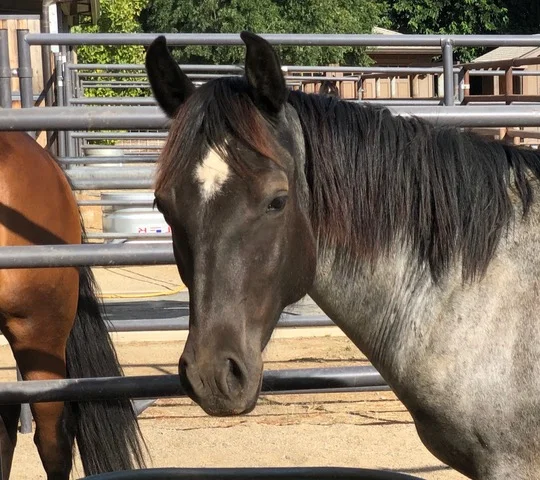By Nancy O’Neil Lombardo
As a trainer at Montgomery Creek Ranch I am always trying to keep the way the horse I’m working with feels in the forefront of my mind. Where are his thoughts and how does he feel about what I’m asking?
If I can get a horse’s thoughts going where I want them, I can then get his feet and body to follow. If I have his thought, I have the whole horse. This starts with directing the horse rather than always driving him.
Driving the horse causes him to flee from us when what we want is for the horse to feel safe and comforted by our presence and willingly going with us. Always driving the horse’s body can lead to worry and even resentment, while directing should lead to trust, relaxation, and softness.
Does driving a horse’s body work? Yes, and to complicate things, it is even sometimes required to begin directing the mind. But the key is to always ask first by directing, even if you think that the horse will have no idea what you are requesting. Sometimes, if you can hang in there, they will surprise you and follow the feel that you are offering, even when they haven’t been exposed to that particular request in the past.
I was working last month with one of our Devil’s Garden yearlings, Magic.
He has been a star pupil. He has been light, engaged, and responsive to our work together so far which has mainly consisted of learning how to lead by first working in the round pen while loose with no halter or lead.
Once haltered and as I began to teach him to move off away from me on the lead line, I fell into an old habit of not taking the time to allow him to respond. I held my left hand up and pointed in the direction that I wanted him to go and when he didn’t respond right away I began to swing the lead, gently at first but then with increasing pressure until the lead actually made contact with his shoulder.
Did it work? Yes, he moved away, but was it in a willing way? No.
He also lost some trust in me and became disengaged, he was escaping from me rather than going willingly where I directed. Where did I go wrong and fail this little horse? I forgot to wait, I forgot to give this yearling the chance to follow the feel that I was offering him. As they say, “I’ll take as long as it takes, as long as it doesn’t take too long.”
How can I direct this horse without driving away his mind and losing his trust? The answer was that I needed to trust him, I needed to wait. I needed to have a positive visualization of what it was that I wanted. Instead of, “I’m going to swing this rope and when he doesn’t move, I will keep up the pressure until he does.” My new thought was, “I’m going to suggest to Magic, that he direct his thoughts away and to the left and I will give him the time to respond.” So after not trying to send him out on the lead line for over a month, I tried again. I raised my left hand and asked his thought to go left. And he did it, he moved off and around me to the left without taking the slack out of the rope as if he’d done it a million times. And, most importantly, he stayed engaged with me and was not fleeing. He followed the direction I suggested, he was given the time to allow his thought to go where I wanted his body to end up, he weighed nothing on the line because that is what a horse’s thought weighs, nothing.
These thoughts may seem too insignificant to some to even mention, but how we ask is everything to our horses. When they are treated with respect and they understand that their thoughts matter, they reward us with trust and confidence that you cannot get by forcing them to respond.
Nancy is the director of horse training and responsible for the medical care of the Montgomery Creek Ranch horses. She got her first horse at age 8 and has owned horses and ridden for others since then, including working at a guest ranch for fifteen years, exercising high goal polo ponies, and working as an assistant trainer and barn manager for a performance horse trainer before coming to Montgomery Creek Ranch.




